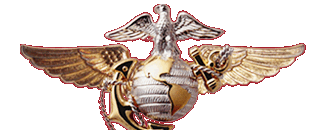MCARA Notables > USMC Electronic Warfare Pioneers
Maj. Ed Jouppi
Maj. Dan Georgia
CWO Joe Bouher
MSgt. Doc Grimes
Joe Bouher and Doc Grimes were avionic technicians and among the first enlisted ECMOs in the Marine Corps’ first EW unit, the AEW/ECM section of Hedron-2 at MCAS Cherry Pt. in 1950, flying TBM-3Q Avengers. Georgia, then a SSgt., joined the unit in late 1950. Maj. Thomas Mann, a pilot and later CO of VMC-1, was the section OIC with Maj. Jouppi as senior ECMO. Jouppi was a former electronics officer in WW II and served as lead ECM instructor for the two assigned TBM-3Q aircraft, which was mainly used for interception and classification of radar signals given its primitive direction finding and jamming capabilities. He was known for his unique ability to locate radars with the TBM-3Q system, which was an art not a science.
In 1951 Bouher and Grimes developed and tested a rudimentary jammer to counter a AAA fire control radar reportedly being in employed in North Korea and were hurriedly sent to the First Marine Aircraft Wing at Pohang (K-3 airbase) along with their jammer. Shortly after their arrival in July, 1951, they formed the first ECM section under MAG-33’s HEDRON which had acquired two AD-2Q Skyraider aircraft from the Navy. Their AD-2Qs had a receive-only capability but Bouher and Grimes were able to locate two APA-17 Direction Finders and add them to the configuration via in-house modifications. These aircraft were used to support initial USMC EW operations in Korea, and Bouher and Grimes were the first to fly USMC ECM missions in combat. After returning to CONUS in the Summer of 1952, they continued to support the expansion of ECM capabilities in the newly formed VMC squadrons.
SSgt. Georgia joined the ECM section early in 1952 before it was transferred to MACG-2, and was quickly checked out in the AD-2Q aircraft by MSgt. Bouher. By the Summer of 1952 the ECM section had expanded to a point that on-site aircrew training was a real problem especially since their AD-2Q Skyraider aircraft had only one ECM position. Shortly before the section was made part of VMC-1 at its standup in September a multi-place AD-4NL was made available. SSgt. Georgia, as the most experienced ECMO and avionics technician, was assigned by Lt. Col. Fox the first VMC-1 CO to design and reconfigure this aircraft to accommodate two ECMOs which would allow inflight training. Despite his junior rank, Georgia was able to complete the extensive AD-4NL modifications at Itami Airbase in Japan using available in-house capabilities. He managed to get the newly configured ECM aircraft, now designated RM-1, back to VMC-1 in Korea in just a few months where it was immediately employed in combat. Georgia received a well deserved commendation for this technical achievement that significantly improved the combat capabilities of the USMC’s first ECM squadron. After completing his combat tour in Korea, Georgia would go on to several technical assignments before returning to complete his outstanding career as an ECMO in the EF-10B during the Vietnam war. Ironically, the EF-10B Sky Knight flown by then Maj. Georgia in Vietnam was the USMC’s first jet EW aircraft and a product of his old mentors Bouher and Grimes.
In 1955, CWO Bouher and Msgt. Grimes were at MCAS El Toro serving in the avionics department of VMC-3 which became VMCJ-3 in December. They were instrumental in the conversion of two F3D-2 night fighters to F3D-2Q prototypes which led to a formal modification program by the Navy Bureau of Aeronautics in 1956-57. The F3D-2Q, later redesignated the EF-10B, was the first tactical jet aircraft dedicated to the EW mission in the Navy or USMC. The EF-10B was flown by all three VMCJs on Cold War ELINT missions around Cuba and Communist countries in the Pacific from 1958 until 1965. In April, 1965 they were deployed to Danang, RVN by VMCJ-1 and began ECM support of Navy and USAF air operations against North Vietnam which continued until October 1969. The EF-10B was retired in June, 1970 largely still in the same configuration that resulted from the pioneering efforts of Bouher and Grimes. As we approach the 60th year of USMC EW operations the legacy of all these Marine EW pioneers lives on.
(Written by Col. H. Wayne Whitten USMC (ret.))

